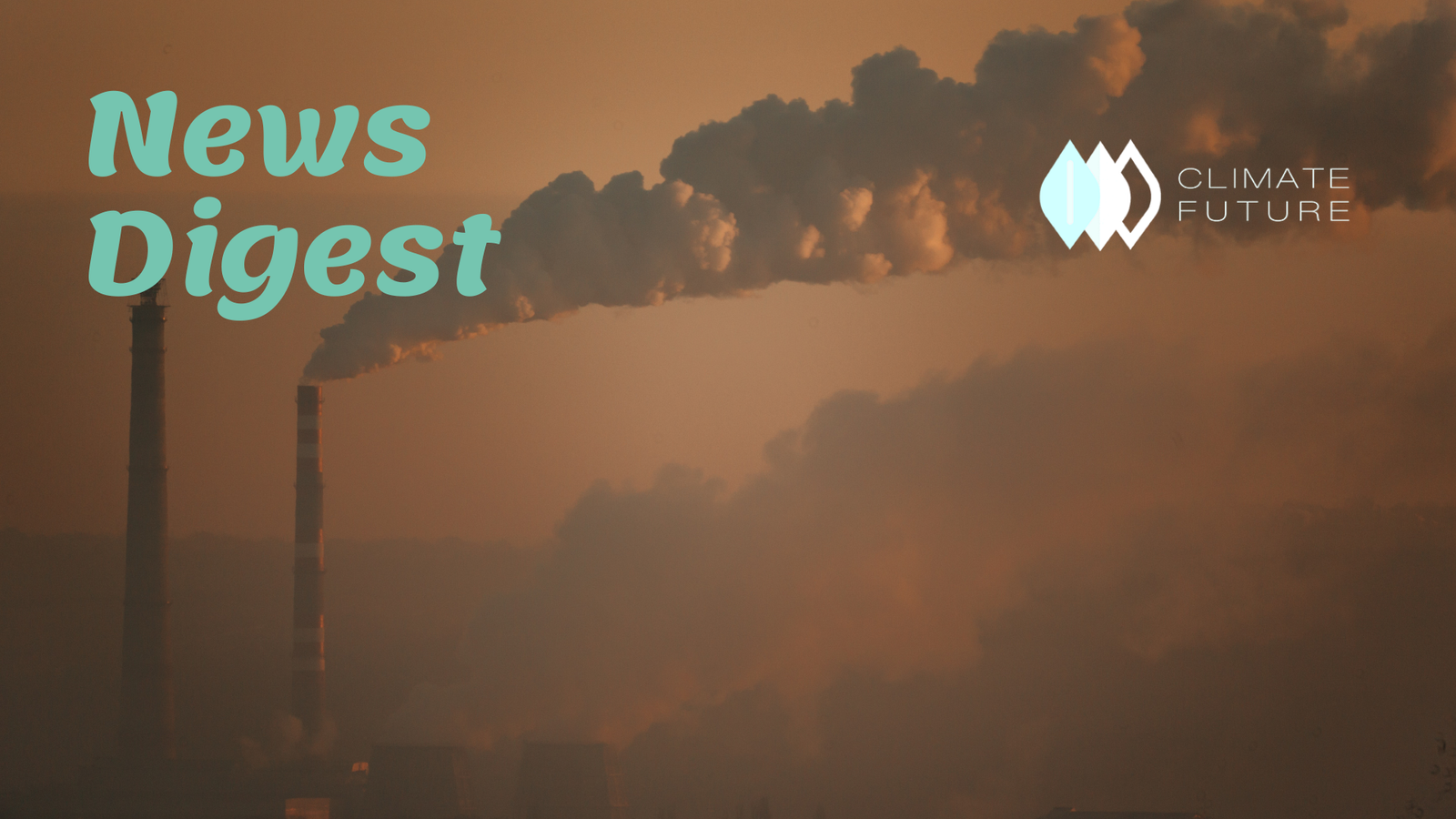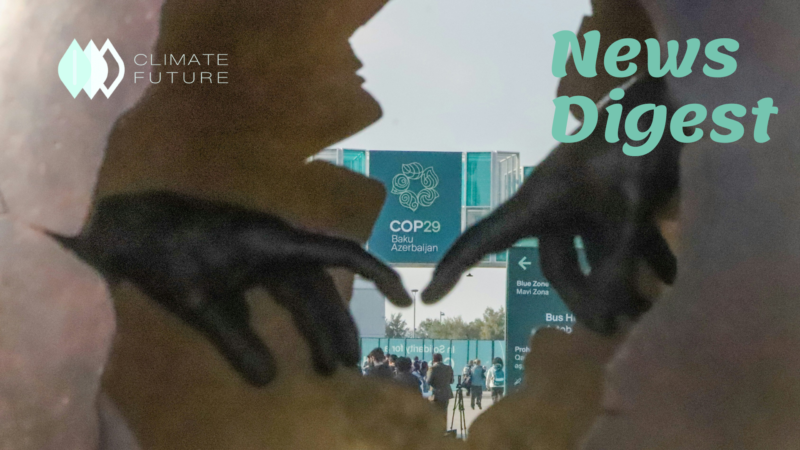An Invisible Killer Hangs in the Air of Asia’s Cities

Credit: Raunaq Chopra / Climate Visuals Countdown
The risk of dying young from air pollution is becoming more and more real for millions of people living in South and Southeast Asian cities. Routine ground monitoring of air pollution is lacking in eighteen fast-growing cities in Asia’s tropical region, each of which is predicted to house over 10 million people by the year 2100. Problems include insufficient funds for monitoring nitrogen dioxide and ammonia, which are precursors to dangerous fine particles (PM2.5), and insufficient pollution control. Long-term exposure to PM2.5 was connected to 149,000 early fatalities in South Asian cities and 53,000 in Southeast Asian cities in 2005, increasing to 275,000 and 80,000, respectively, by 2018.
The scenario gets worse when there is a strong El Niño, as several places are predicted to see below-normal rainfall. The biggest rise in premature deaths from PM2.5 exposure was observed in Dhaka, Mumbai, and Bangalore. The study emphasizes how urban population growth in these cities will increase exposure to pollution and cause more premature deaths even if pollution levels stay the same. In the 18 cities, nitrogen dioxide and ammonia levels are growing due to increased traffic, power plants, and agriculture, according to satellite studies conducted by NASA and the European Space Agency between 2005 and 2018.
While low-cost sensors are becoming more popular, their ineffectiveness in tracking long-term changes is limited by their biases and recent invention. Longer-term satellite measurements demonstrate a notable rise in ammonia and nitrogen dioxide concentrations. Only Jakarta has seen a decrease in nitrogen dioxide, indicating that its air quality controls are working. Asian cities face issues in mitigating air pollution due to the shift from rural to urban sources of pollution, such as rubbish burning and vehicle traffic. To prevent a health crisis in rapidly urbanizing areas, the study highlights how urgent it is to install emission control technologies and regulatory measures.
Fewer cyclones forecast for Philippines in 2024 due to El Niño

This Dec. 18, 2023 photo shows residents of San Francisco, Agusan del Sur evacuating amid the onslaught of Tropical Depression Kabayan.
In 2024, just 13 to 19 tropical cyclones are predicted for the Philippines, down from an average annual tally of 19 to 20. The prediction was presented by Ana Liza Solis, head of PAGASA’s climate monitoring section, who stated that two to five cyclones are expected in the first half of the year and eleven to fourteen from July to December. Merely 11 cyclones touched down or approached the Philippines in 2023.
The nation is presently experiencing a significant El Niño, which is causing dry weather. The majority of global climate models indicate that this event will probably continue until the March–April–May 2024 season, however, PAGASA thinks it may last until February.
By the end of the month, there could be a drought in provinces like Benguet, Kalinga, Apayao, Ilocos Norte, Ilocos Sur, La Union, Pangasinan, Cagayan, Bataan, Nueva Ecija, Tarlac, Zambales, Cavite, and Palawan. El Niño, Solis warns, may make 2024 one of the warmest years ever recorded, with highs of over 40 degrees Celsius in some places.
Concerns are expressed by Celeste Saulo, head of the World Meteorological Organization, who says that as El Niño’s full effects materialize, 2024 might be much hotter and more intense than 2023. The Philippines faces challenges due to a combination of fewer tropical cyclones, prolonged El Niño conditions, and the possibility of record-high temperatures. This highlights the importance of diligent climate monitoring and adaptation efforts.
EVs Lead Clean Transportation Efforts

Canoo is taking preorders on their lifestyle vehicles and pickup trucks.
The transportation industry is a significant source of greenhouse gas emissions, accounting for 20.2% of emissions worldwide and 27% of emissions in the United States. Decarbonizing transportation is greatly aided by the electric vehicle (EV) sector. The number of EV models increased from 34 in 2022 to 42 in Q1 2023, indicating an expanding market. The first quarter of 2023 saw a 44.9% increase in EV sales over 2022, and EVs currently account for 13% of the worldwide automobile market. Remarkably, 18 of the top 20 automakers in the world, who account for almost 90% of all auto sales worldwide, have pledged to significantly increase their production of electric vehicles. Reputable automakers such as Volvo intend to sell only electric vehicles by 2030, while GM intends to offer a zero-carbon lineup by 2035. Electricity is being actively pursued by other significant firms, such as Ford, Volkswagen, Stellantis, and even the high-end brand Bentley.
New players, such as startup EV manufacturers, are joining the market alongside major automakers, offering models for both individual consumers and commercial fleets. Canoo’s aspirations for expansion are demonstrated by a recent agreement that was revealed in April 2023 and entails the establishment of a 500,000-square-foot manufacturing facility in Oklahoma. Despite these encouraging advancements, many EV manufacturers continue to face difficulties in commercializing their vehicles and maximizing cash flow. Even though Canoo’s growth is gaining traction, its success is still uncertain due to larger issues facing the EV industry.
How 2024 Will Be a Watershed Climate Moment for China

China Longyuan Power Group Ltd. onshore wind turbines in Pingtan Island, Fujian province, China, on Oct. 18. Bloomberg/Getty Images
Millions of people have been lifted out of poverty by China’s economic transformation from a poor country in the Global South to the second-largest economy in the world. But there have been notable carbon emissions as a result of this increase. China’s emissions are expected to peak in 2023 and then begin to drop in 2024, according to recent projections from the International Energy Agency and the Centre for Research on Energy and Clean Air. According to the International Energy Agency, China’s advancements may have some bearing on the possibility that greenhouse gas emissions could peak globally in 2025.
China updated its Paris Agreement pledge in 2021, shifting the emission peak from around 2030 to a more immediate timeframe. These actions demonstrate the country’s rather cautious climate officials. The reluctance is ascribed to internal political dynamics and bureaucratic norms, which adversely receive public commitments. However, indications suggest Beijing is realising it needs to deal with pollution. China’s climate ambassador promised at COP28 to provide information on China’s emission peak date and level.
China’s climate targets for 2035, which are scheduled to be submitted to the UN by early 2025, hold significant importance. Since China promised to peak before 2030, these targets will probably include a net reduction in emissions. The post-peak scenario that the Chinese imagine, be it a plateau or a decrease, will have a big impact on global climate efforts. There are causes for optimism despite obstacles. China plans to transition away from its reliance on coal by the end of the decade by tripling its installation of renewable energy. The sectors of battery storage, electric cars, and renewable energy are expanding and offering hope for sustainable growth and pollution control.
References
https://thediplomat.com/2024/01/an-invisible-killer-hangs-in-the-air-of-asias-cities/



